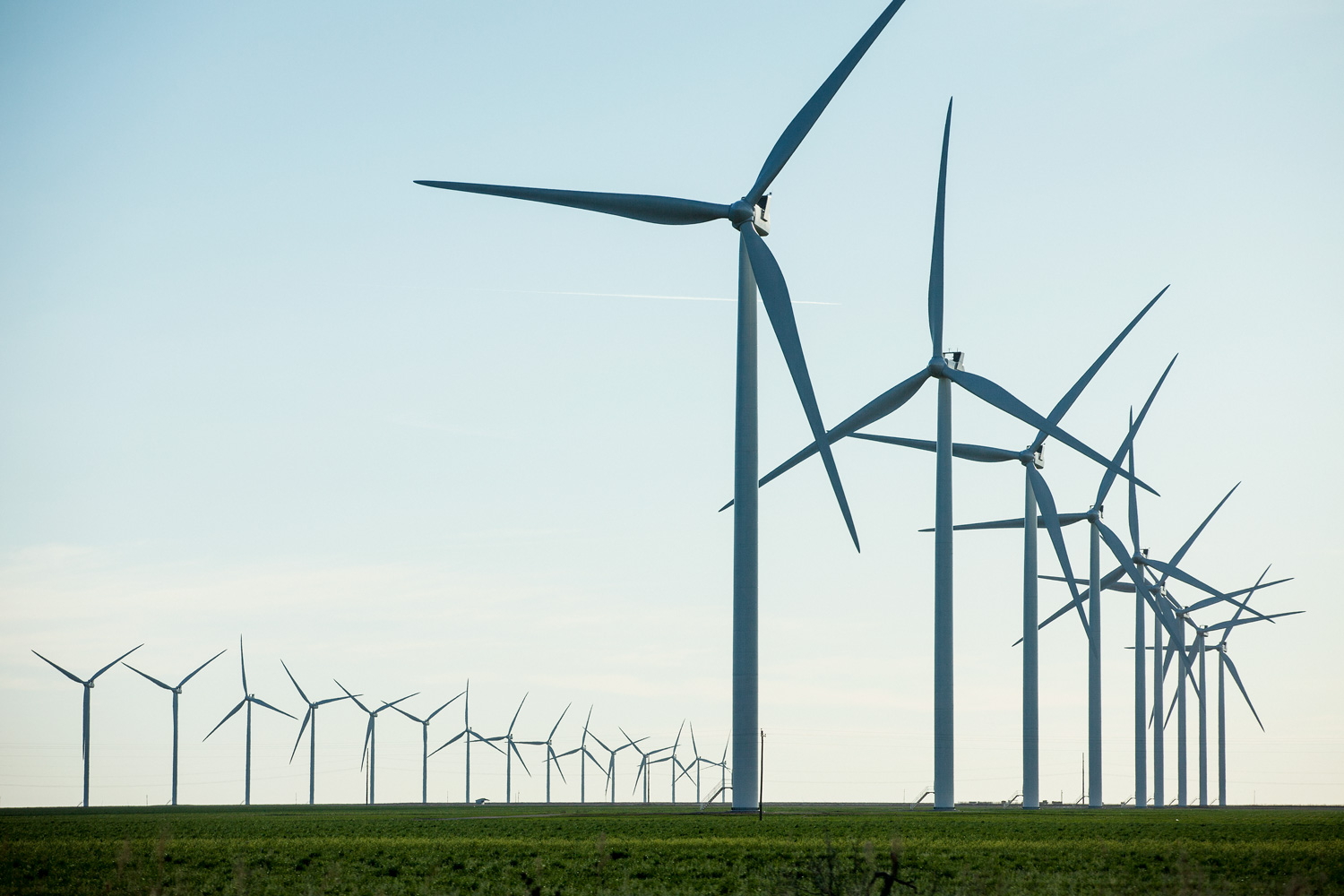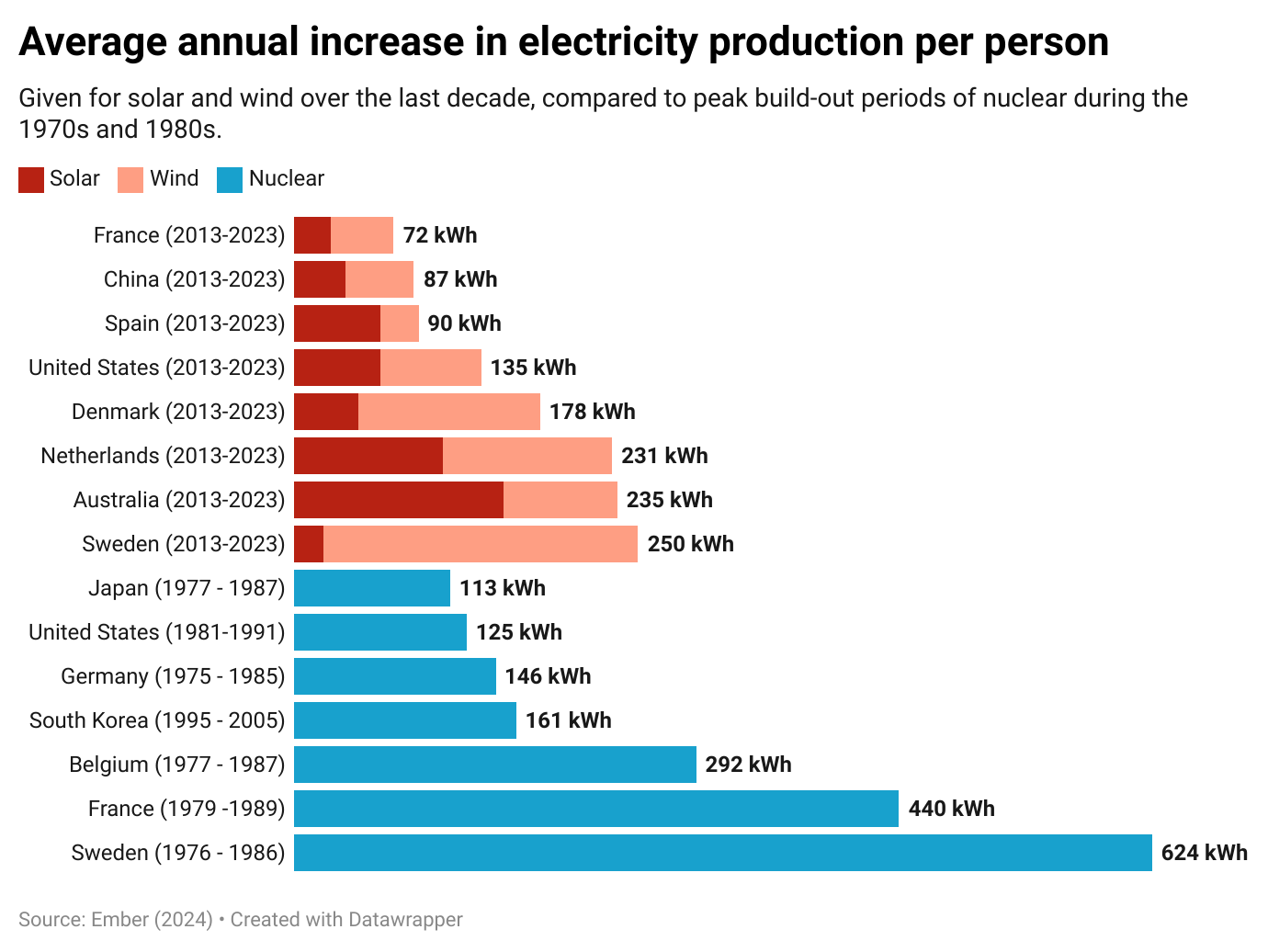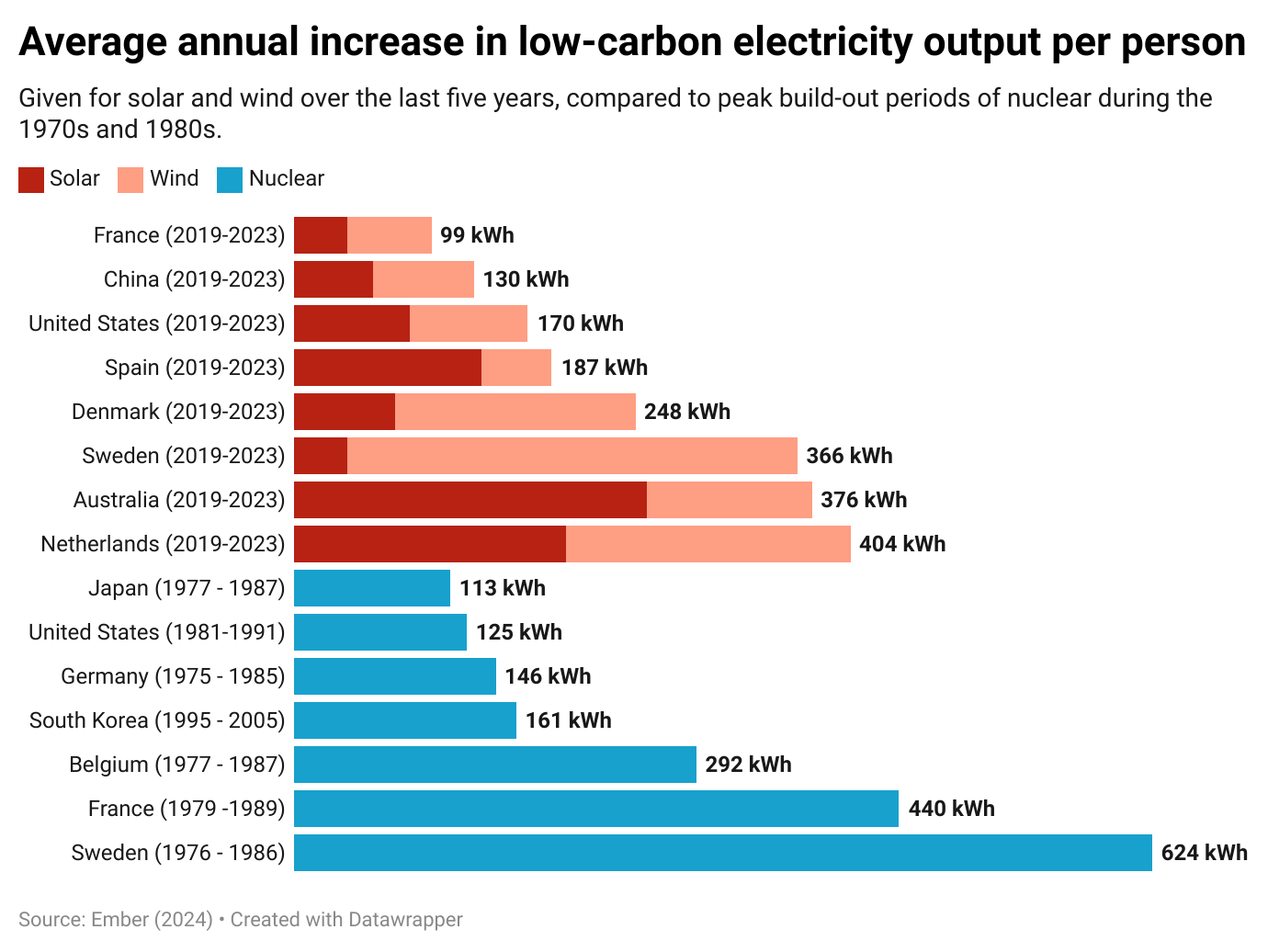Who really goes faster, renewables or nuclear?

Wind and solar installations are accelerating, but can they match the pace of nuclear power in France and Sweden in the 1970s? Here's what the data says
In her newsletter Sustainability by numbers , Hannah Ritchie – a researcher at the University of Oxford, data scientist and author of It's Not the End of the World – asked whether wind and solar capacity installations could ever match the pace of energy installations nuclear power in the 1970s and 1980s, particularly in France and Sweden, which proceeded at a “truly impressive” speed.
WHO WINS THE RENEWABLES-NUCLEAR COMPARISON, ACCORDING TO THE DATA
Using the latest data released by the think tank Ember in its Global Electricity Review , Ritchie calculates the average annual change in solar and wind production over the last decade (from 2013 to 2023) and comes to the conclusion that yes, in several countries wind and solar are spreading at a faster pace than that of many nations that had convincedly focused on nuclear power in the 1970s and 1980s, such as the United States, South Korea and Germany; the expansion of the two renewable sources, however, remains well below the rates of Sweden and France.

The data scientist recognizes that the sharpest acceleration of wind and solar has occurred in the last five years, so she recalculates the average over the last five years (2019-2023) rather than the last ten. Despite “truly impressive deployment rates,” he writes, wind and solar still don't beat the past nuclear performances of Sweden and France.

THE DIFFERENCES BETWEEN TODAY AND YESTERDAY
Ritchie explains that the 1970s and 1980s were decades of great expansion in electricity demand; for this reason, nuclear power plants were not built to replace existing coal and gas plants, but to increase total generation capacity. In other words, there was no desire to decarbonise the electricity mix but to satisfy a growing need.
Today the situation is practically the opposite, at least in developed countries: wind and solar farms are installed to replace fossil fuel power plants, and are growing in number even if electricity demand is static. This period of stagnation in demand, however, should soon end thanks to the electrification of consumption: electric vehicles, heat pumps and induction cookers – just to remain in the domestic sector – will stimulate the demand for electricity and, together with this, the installations of capacity renewable, mainly solar.
This is a machine translation from Italian language of a post published on Start Magazine at the URL https://www.startmag.it/energia/confronto-rinnovabili-nucleare-ritmo-installazioni/ on Sat, 18 May 2024 07:26:42 +0000.
